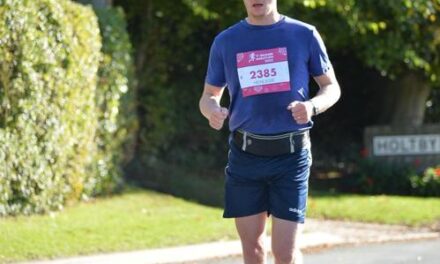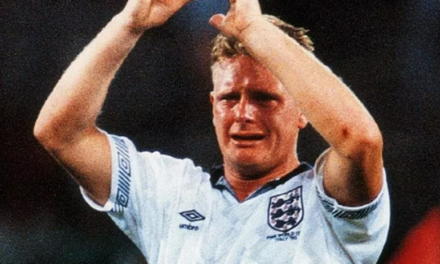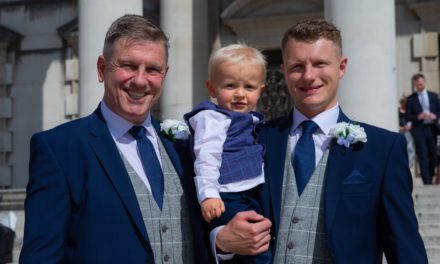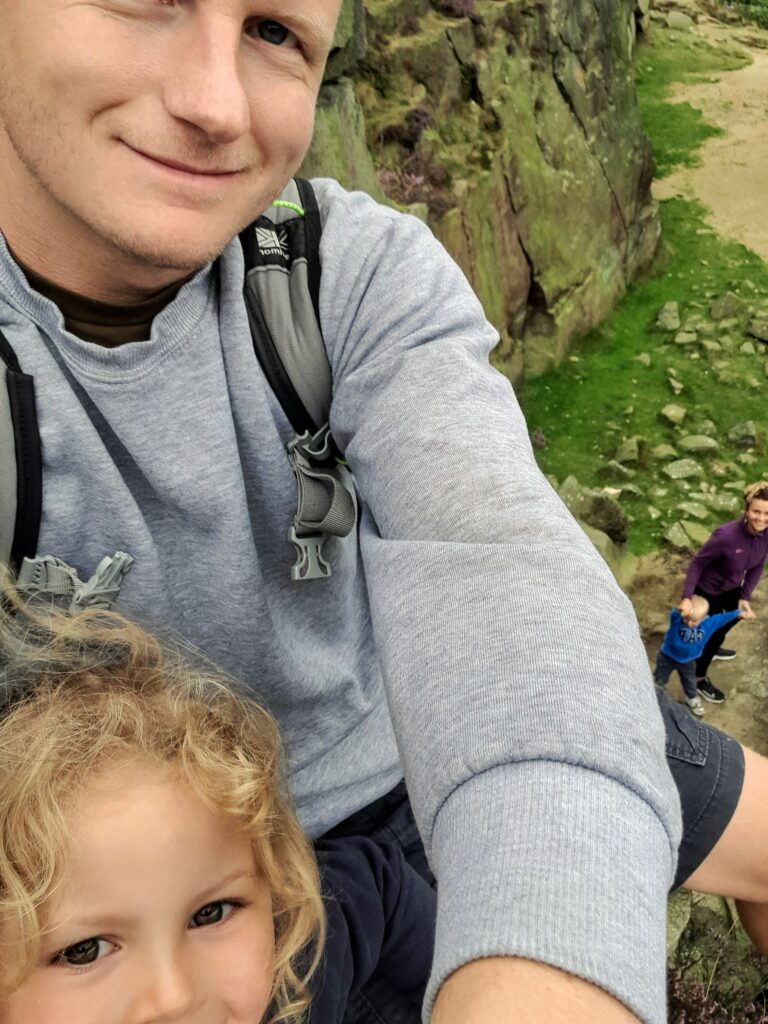A loud thud. An agonised scream from a distant corner of the house. The pattering of little footsteps accompanied by unbridled bawling. It grows louder and closer.
Jude staggers into the room, one hand pressed against the side of his head. As the anguished sobs subside, he manages to tell me he’s banged his head. On the door.
My detective brain kicked in. He ran into a door once. Not the flat part. The angle. It left a long thin groove straight down his forehead. But that hadn’t happened this time. The impact was on the side.
Which meant only one thing. It must have been the door handle that he whacked his noggin on.
“Ah, I suppose your tall enough to smash your head on door handles now. You’re getting such a big boy!”
I realised that this was the first time it’d happened.
It then struck me that Jude’s life so far could be broken down into phases based on what household items (usually involving corners) he would whack his head on.
Prior to entering the door handle stage, the highest thing that posed a danger to his cranial well-being was the dining table.
And before that, he’d graduated through the stages outlined below. These stages are necessary and help growing infants to gradually manage different types of danger. Consider them a school of hard knocks for babies.
Each of these phases has a rough age range but this will vary depending on the size and mobility of your baby, as well as the height of the corners of your home furnishings.
0-6 months – Passive stage
Unable to propel themselves in any way, the only way baby’s bonce can be bruised is if you dropped them, dropped something onto them, or hit their head on the ceiling when you threw them up in the air.
I was particularly careful with Jude at this stage, especially when throwing him up in the air, due to his exceptionally large fontanelle. That’s the soft bit at the top of a baby’s head where there’s a gap between the bones of the skull. Eventually, these bones fuse and the gap disappears.
Head magnet stage
They’re still unable to move, but are now able to sit unsupported for some time.
However, their balance still hasn’t developed yet, so minor movements such as turning their head or reaching for something can and will cause them to topple over.
And of course, the laws of babyhood dictate that no matter how many cushions you surround a sitting baby with, their fall will be broken by their head on a hard plastic toy such as a Megablok.
It’s almost as though their head is magnetically drawn to the nearest solid object.
Following this stage, progression through the phases accelerated as Jude became more mobile and continued to grow.
Coffee table clunks stage
Baby will start to use furniture to pull themselves up to a standing position. If they go for the sofa, it isn’t too bad.
However, using a coffee table leg is also a convenient tool. Often, their proud little smile will be interrupted by the nasty clunk of the top of their head on the protruding edges or corners of the table. This also applies to side tables.
Telly troubles stage
TV stands are also dangerously convenient for baby to pull themselves upright. What’s more, baby may now be able to walk.
Small toys and balls will inevitably end up behind or under the TV, so baby will spend lots of time tottering towards the sharp edges of the TV stand, which are now at eye level.
Jude has the scar to prove it.
Dining danger stage
Their new-found locomotion will encourage them to explore previously inaccessible parts of the home.
Next up from the TV stand is the dining table.
Under the dining table provides a great little spot for hiding, playing, fighting, harassing cats etc. However, their lack of spatial awareness means they’ll forget that there’s a table above them. As they get up to chase their sibling/cat they will inevitably wallop the top of their head and wonder how that very hard, heavy slab of wood above their head got there.
The sound of a child bashing their head on a dining table is unmistakable. Immediately after the thud of bone on wood, you will hear the sound of whatever is on the table as it does a tiny jump following the impact.
Handle headers stage
Jude’s current stage, and one that is particularly dangerous for him due to the layout of our house and the fact he uses it as a running track.
His route from the dining area, through the kitchen and hallway and into the living room, takes in two doors, both of which are situated on sharp turns.
This means that if he overcooks these turns or simply doesn’t see the bit of metal sticking out the door, he’ll take a glancing but nasty blow to the side of the head.
Serious injury is prevented by the fact that doors offer a little bit of give when his head cracks into the handle, softening the blow slightly.
Worktop wallops stage
The next stage for Jude. His wispy blonde locks are already brushing the protruding corners of worktops at both ours and his grandparents’ house. It won’t be long until he concusses himself on one of these.
I’m particularly worried about worktop corners as, unlike the doors, they are firmly fixed in place and will ensure Jude receives the full force of the impact.
The worktop wallops stage is the final stage of toddlerhood. Following this, they’ll be full-blown children, and a whole new world of ways to injure themselves awaits.
Implications
Anyway, back to this new system for measuring kids. I think it could be greatly beneficial.
I struggle to visualise abstract measurements. So having easily relatable reference points based on everyday household objects would help to understand their physical development much better.
It’d be especially useful for those conversations with relatives or acquaintances you only see once in a while but are still greatly interested in the development of your little cherubs (or at least pretend to be).
Simply tell them which head-banging phase your little’un is currently in and they’ll be able to picture your child with ease.






Recent Comments